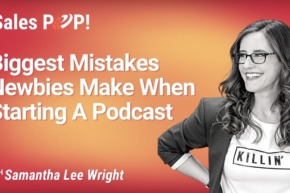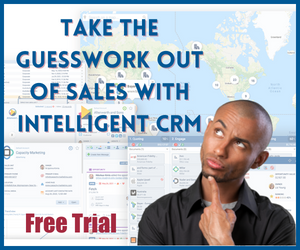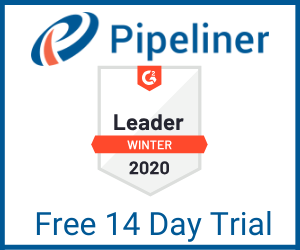Trust acts as the unseen yet vital currency fueling every successful relationship—whether in leadership, sales, or organizational change. In a compelling discussion on the “Expert Inside Interview” series, John Golden of Sales POP! engaged with Darryl Stickle, a globally recognized authority on trust, to explore how trust can be cultivated in an era marked by uncertainty and emotional complexity. Drawing on Darryl’s rich background—from negotiating with Indigenous communities on behalf of the Canadian government to advising Fortune 500 companies—the conversation serves as a comprehensive guide to mastering the art and science of trust.
Here’s a detailed breakdown of the core themes and practical strategies that leaders, sales professionals, and change agents can apply to build stronger, more enduring connections.
1. The Cornerstone of Success: Why Trust Matters
Darryl’s early life in a remote Canadian town instilled in him a sense of trust as essential to survival, shaping his lifelong study of the concept. In business contexts, trust is far more than a luxury—it is the fundamental basis for all meaningful interactions.
- Key Understanding: Trust isn’t simply present or absent; it exists on a continuum influenced by context and emotional states.
- Practical Tip: Regularly assess your trust levels with colleagues, clients, and partners, recognizing that trust can fluctuate over time.
2. The Dynamics of Trust: Embracing Uncertainty and Vulnerability
Darryl presents a powerful formula for trust:
Trust = Willingness to accept risk (Uncertainty + Vulnerability)
- Uncertainty refers to unpredictability in others’ actions.
- Vulnerability means exposing oneself to potential harm or disappointment.
Cultural background, personal history, and past experiences shape how much risk individuals are willing to take, with those having positive vulnerability experiences more inclined to trust.
- Actionable Insight: Before seeking trust, understand your audience’s comfort with risk and vulnerability.
3. Vulnerability: A Strategic Tool, Not a Weakness
Often misunderstood, vulnerability in trust-building means carefully sharing risks—such as admitting mistakes or depending on others.
- Key nuance: Intentionality is crucial; oversharing or premature vulnerability can damage trust.
- Levels of vulnerability vary—buying a product is low risk, while referring someone else carries higher reputational stakes.
- Actionable Advice: Begin with small, manageable disclosures to encourage reciprocity and avoid asking for significant commitments too soon.
4. The Trust Deficit in Today’s World
Both John and Darryl highlight an unprecedented decline in trust, influenced by factors like:
- The rise of social media encourages surface-level interactions.
- AI technologies fuel the spread of misinformation.
- The lingering effects of the pandemic are causing skepticism and emotional exhaustion.
This environment makes people more cautious about risking trust.
- Practical Approach: Explicitly acknowledge these challenges and show empathy toward others’ skepticism.
5. Trust as the Core Offering in Sales
Darryl recounted a case where a mutual fund company shifted its focus from product features to cultivating long-term trust, resulting in significant growth.
- Insight: In many sectors, trust itself is the actual product, often outweighing price or features.
- Strategies: Prioritize relationship-building over mere pitching and measure trust through feedback mechanisms rather than just transactions.
6. The Four Pillars of Trust: Ability, Benevolence, Integrity, Transparency
While many emphasize ability or expertise, Darryl stresses the importance of balancing four critical elements:
- Ability: Proven competence.
- Benevolence: Genuine care for others’ well-being.
- Integrity: Consistently keeping promises and acting in line with values.
- Transparency: Openly sharing reasoning and context.
- Common error: Relying solely on expertise without demonstrating care or openness.
- Actionable step: Engage clients in defining what success means to them to ensure alignment.
7. Consistency and Clear Communication: Foundations of Trust
Trust is fragile and can be quickly undermined by broken promises or poor follow-up.
- People tend to remember negative experiences more vividly than positive ones.
- Transparent communication helps prevent misunderstandings about intentions.
- Best practices: Under-promise and over-deliver, and proactively communicate any changes to keep stakeholders informed.
8. Referrals: The Ultimate Trust Reward
Rather than indiscriminately requesting referrals, Darryl and John agree that referrals naturally stem from trust and customer delight.
- Misalignment between sales, marketing, and service teams can erode trust and reduce referral rates.
- Advice: Focus first on exceeding expectations before soliciting referrals, and align messaging and incentives across departments.
9. Rebuilding Trust: Practical Steps
Darryl recommends two complementary tactics:
- Start with Small Vulnerabilities: Share your intentions, admit uncertainties, and invite others to open up.
- Demonstrate Benevolence: Show genuine support by asking about others’ definitions of success and how you can assist.
- Implementation: Use stories or trusted references to initiate conversations about trust, then reinforce commitments through consistent actions.
10. Cultivating Depth in a Superficial World
In an era where relationships often lack depth, Darryl’s organization, Trust Unlimited, advocates for investing in fewer but more meaningful connections.
- Core message: Prioritize quality over quantity, and build trust through authentic, consistent behavior.
- Tips: Schedule regular check-ins and request honest feedback to nurture deeper bonds.
Conclusion: Elevating Trust as a Strategic Advantage
This discussion highlights trust not merely as a soft skill but as a critical strategic asset that fuels leadership effectiveness, sales growth, and successful transformation. In uncertain times, mastering the nuances of trust-building enables individuals and organizations to thrive.
Final advice: Begin with small, intentional steps. Lead with benevolence and integrity, and constantly ask yourself, “Am I fostering trust or eroding it?” Your relationships and outcomes depend on this reflection.
Our Host
John is the Amazon bestselling author of Winning the Battle for Sales: Lessons on Closing Every Deal from the World’s Greatest Military Victories and Social Upheaval: How to Win at Social Selling. A globally acknowledged Sales & Marketing thought leader, speaker, and strategist, he has conducted over 1500 video interviews of thought leaders for Sales POP! online sales magazine & YouTube Channel and for audio podcast channels where Sales POP! is rated in the top 2% of most popular shows out of 3,320,580 podcasts globally, ranked by Listen Score. He is CSMO at Pipeliner CRM. In his spare time, John is an avid Martial Artist.








Comments